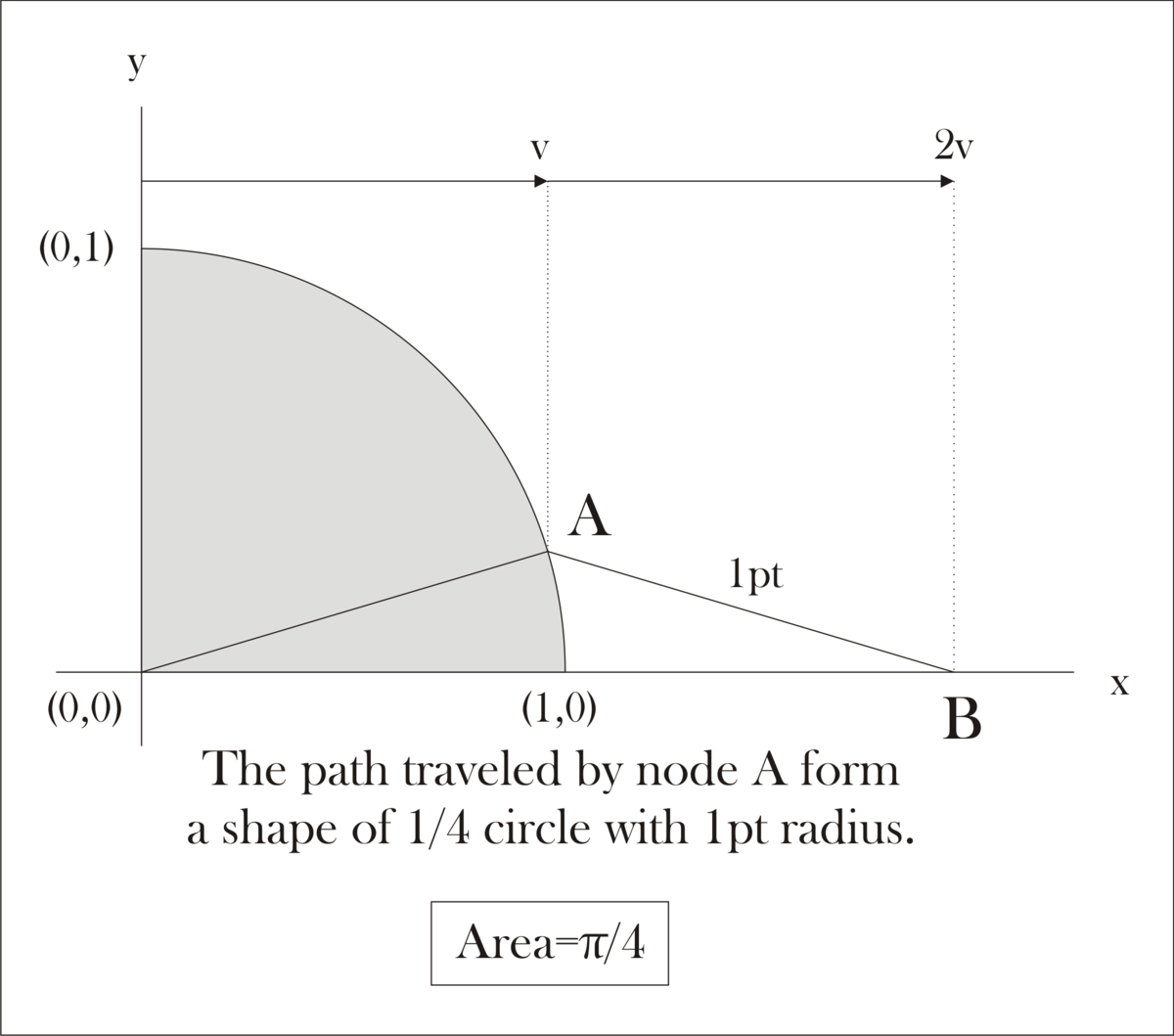Issac's points
There exists points on Cartesian coordinate. Point has coordinates . Point is on the origin .
Point and always has a constant distance of from each other.
Point moves with a horizontal velocity (parallel to the x-axis) of
Point moves with a horizontal velocity of
Point 's vertical velocity (parallel to the y-axis) is while Point is allowed to move vertically in order to keep the constant distance of .
All this movement is happening in the first quadrant.
Let be the area made by the figure defined by: the axis, the axis, and the path traveled by point up to where it meets the axis. Find
After you solve this, you might want to try a continuation of this problem.
Try my Other Problems
The answer is 785.
This section requires Javascript.
You are seeing this because something didn't load right. We suggest you, (a) try
refreshing the page, (b) enabling javascript if it is disabled on your browser and,
finally, (c)
loading the
non-javascript version of this page
. We're sorry about the hassle.

let coordinates of A at time t be ( v t , y ) and those of B ( 2 v t , 0 )
Use distance formula to get y , y = 1 − v 2 t 2
Hence locus of A is x 2 + y 2 = 1
Area is 4 π